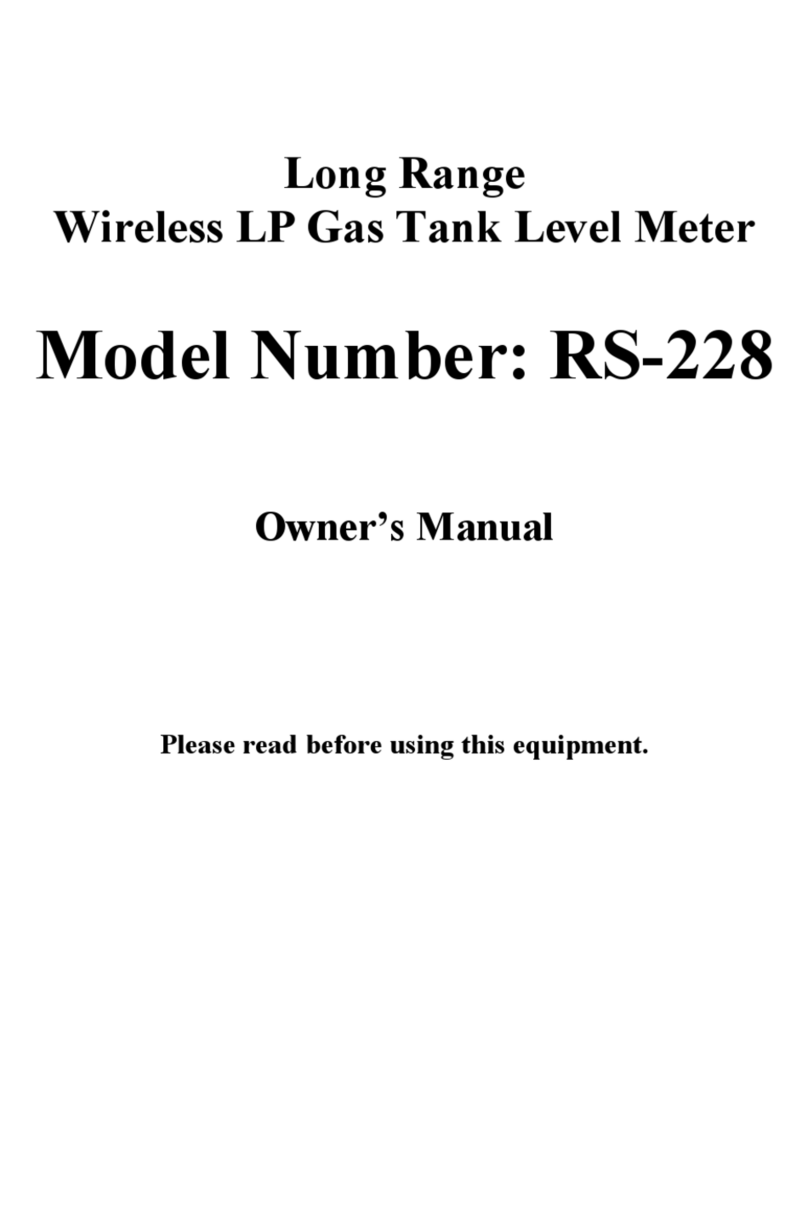
MODEL 158A 909GF197B
- 5 -
Section III - INSTALLATION
3.1 GENERAL
Examine the instrument for possible shipping
damages. IMPORTANT: If for any reason it is
determined that parts should be returned to the
factory, please notify the nearest Robertshaw
sales representative prior to shipment. Each unit
must be properly packaged to prevent damage.
Robertshaw assumes no responsibility for
equipment damaged in shipment due to improper
packaging.
Choose the location in accordance with good
instrument practice, avoiding extremes of
temperature, humidity and vibration (see
Specifications, Section II).
3.2 PROBE MOUNTING
Level-Tel probes for use with the Model 158A are
purchased separately from a variety of styles and
types which provide for various specific
applications involving liquids or granular
materials. Insulated rod-type probes are normally
used for liquid solutions or liquid-interface
junctions.
Since many materials have a tendency to build up
on the probe over extended periods of operation,
it is advisable on horizontally mounted probes to
place the probe so that its lower tip is below the
gland entrance. This encourages self-cleaning by
permitting the material to drip from the probe.
However, some materials will continue to build up
and cause the Level-Tel to become insensitive or
fail to operate. If such material is being used, the
installation should be made so that the probe is
easily removed for periodic cleaning.
The face of the gland on the rod-type probes
must be installed until nearly flush with the vessel
wall. DO NOT install the probe in a nozzle,
recess, or open-end well, unless the probe was
supplied with a factory assembled sheath as
there is danger of material collecting in such a
recess and causing false operation.
3.3 TRANSMITTER UNIT MOUNTING
The Model 158A is designed for vertical surface
mounting: e.g. wall, panel or column. Choose the
mounting location to avoid extremes of ambient
temperature or vibration (see Specifications,
Section II).
3.4 WATER TIGHT & WEATHERPROOF
TRANSMITTER MOUNTING & ELECTRICAL
CONNECTIONS
See Figures 1, 3, 4, 5, 6 and 7 for the mounting
dimensions and electrical connections of the
Water Tight and Weatherproof Transmitters. See
Figure 8 for interconnection diagram for those
models certified for intrinsically safe probe
installations.
3.5 EXPLOSION PROOF TRANSMITTER
MOUNTING & ELECTRICAL CONNECTIONS
See Figures 2, 3 and 5 for the mounting
dimensions and electrical connections of the
Explosion Proof Transmitter. See Figure 8 for the
interconnection diagram for those models certified
for intrinsically safe probe installations.




























